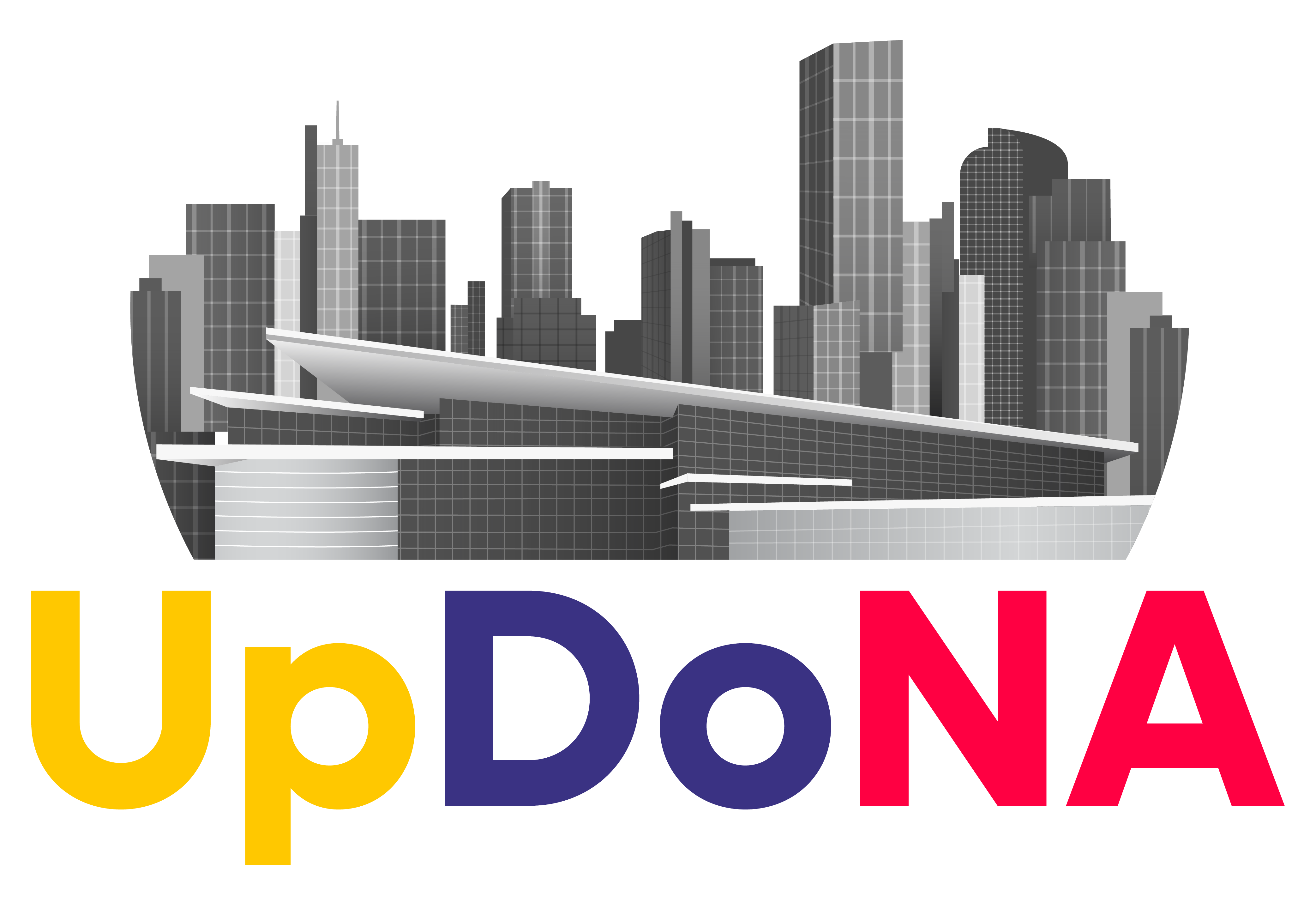In our present era of heightened concern about climate change and the environment, with an objective to reduce carbon emissions, it is not easy to understand why a major mode of city traffic – the humble sidewalk – is not given the attention it deserves. Every day, UpDoNA residents are challenged by sidewalk hazards as we walk around the neighborhood. This includes uneven heights of adjacent sidewalk panels, missing, broken, cracked, or chipped concrete, uneven settlement.
You may be surprised to learn that maintenance and repair is the responsibility of the owner of the building that is adjacent to the sidewalk. That is why you see a building’s staff clearing snow off the sidewalk in the winter. According to a 2021 article by David Sachs, this “approach dated back to the 1950s when the city government fell in love with the automobile and decided that walking was over, according to Jill Locantore, executive director of the Denver Streets Partnership. She added, “and it turned out that approach is not only impractical – there’s still a huge portion of the population that can’t drive – but also people like walking. Walking is a pleasant and efficient way to get around. And it makes zero sense that we should provide no infrastructure for that most basic form of human movement.” Also, safe and convenient sidewalks are necessary to get to and from public transportation, restaurants, museums, offices, and the myriad of other downtown activities.

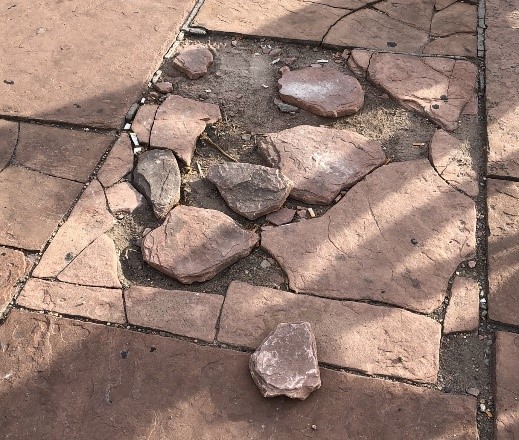
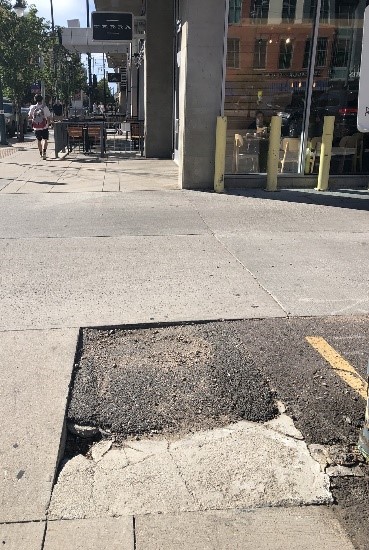
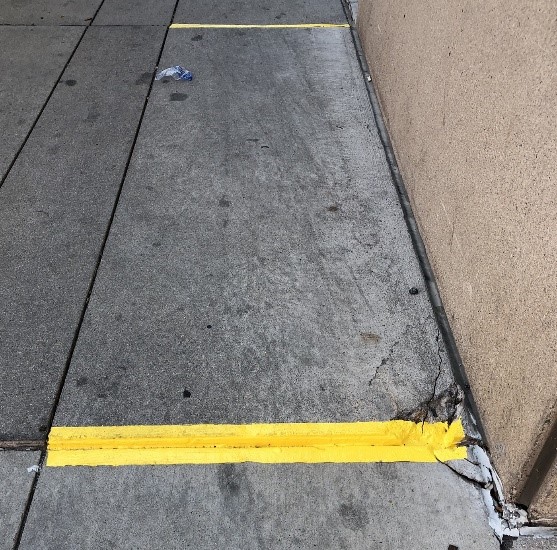
Uneven sidewalks and broken concrete are endemic in the UpDoNA neighborhood.
After tripping several times, one of our UpDoNA members took Pilate lessons to learn how to fall! And recently, one of our UpDoNA members tripped and fell flat forward, suffering injuries to her face and damage to her glasses. (As a result, you can see yellow paint stripes on the sidewalk at the corner of 14th and Arapaho). In addition to walkers, these sidewalk hazards are a problem for people with strollers, wheelchairs, carts, and yes, scooters.
One way to solve this problem is to call 311 and notify the agent of the precise location and type of sidewalk issue. The agent will then assign a case number that prompts Denver’s Right of Way group to dispatch an inspector to the site. The building owner is then notified and is given a certain number of days to appeal or proceed with repairs. There are some differences in the municipal code between how residential and commercial owners can respond. Fines and penalties can be assessed for non-compliance.
In 2018, Denver was allocated $80M to repair sidewalks. However, in 2020, a City and County Auditor’s report described the city “had not effectively implemented, monitored, or evaluated the program to ensure it met its intended goal…to ensure the city has a well-maintained sidewalk network for all Denver residents and visitors.” A new initiative may be on the ballot in this coming Fall elections.
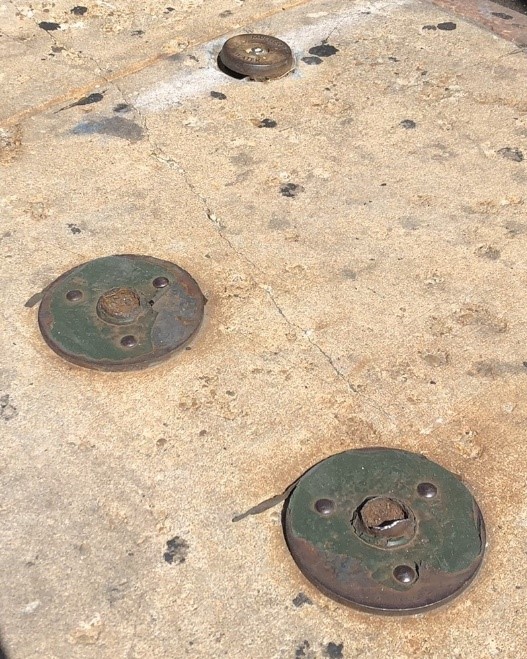
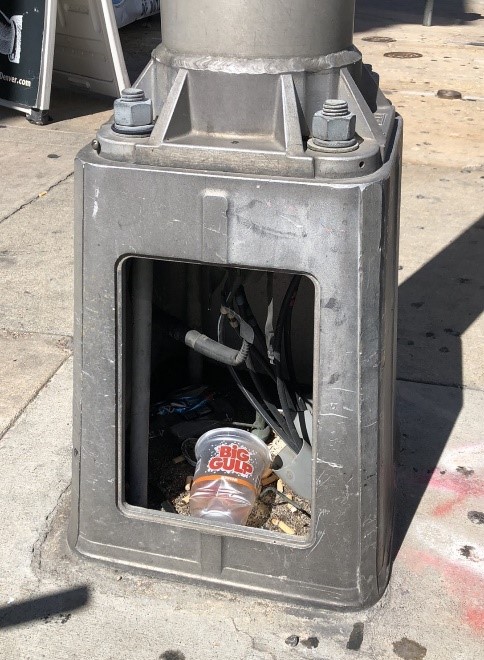
Other hazards include protruding cut-off metal pieces and missing cover plates at the base of light poles, exposing live wires that can cause injury or worse to a curious child.
Who to contact: 311
Who will respond: Right of Way Inspectors
2020 Audit Report: “Neighborhood Sidewalk Repair Program, Department of Transportation & Infrastructure, November 2020”
